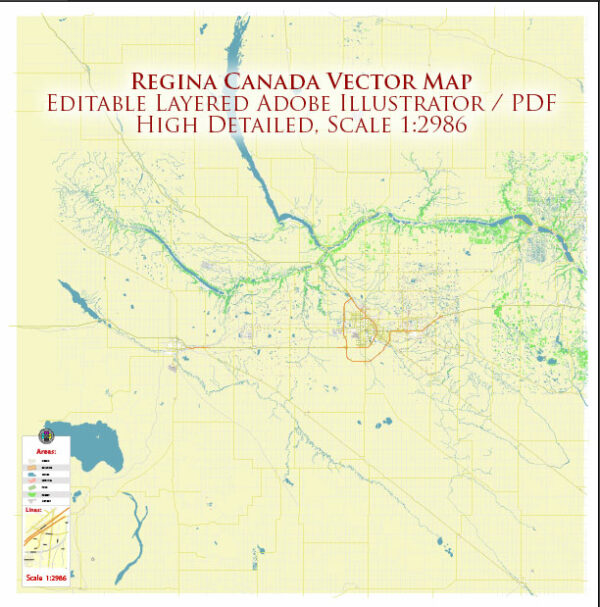Regina, the capital city of the province of Saskatchewan, Canada, has a history of urban development that reflects the region’s agricultural roots, economic growth, and cultural diversity. Here’s an overview of Regina’s history:
- Establishment and Early Development (Late 19th century): Regina was established in 1882 as a territorial capital for the North-West Territories. The Canadian Pacific Railway played a crucial role in the city’s early development by attracting settlers and facilitating transportation. Regina’s initial layout followed a grid pattern, common in many North American cities of the time.
- Prairie Boom and the Agricultural Economy (Early 20th century): The early 20th century saw a significant influx of settlers to the Canadian Prairies, including Regina and the surrounding area. The city became an important hub for agricultural activities, and its growth was closely tied to the success of the farming community. The Regina Cattle Exchange, established in 1888, contributed to the city’s role in the livestock industry.
- The Seat of Government (Early to Mid-20th century): Regina became the capital of the newly created province of Saskatchewan in 1905. The construction of government buildings, including the Saskatchewan Legislative Building, gave the city a distinct architectural character. Wascana Centre, a large urban park and lake, was developed in the early 20th century, enhancing Regina’s green spaces.
- The Impact of the Great Depression and World War II (1930s-1940s): Like many places, Regina faced economic challenges during the Great Depression. However, the city experienced some growth during World War II due to increased demand for agricultural products. The war also brought about changes in the economy and demographics of the city.
- Post-War Growth and Urban Planning (1950s-1960s): The post-war period brought about suburbanization and a shift in urban planning principles. Regina experienced growth, and new residential neighborhoods were developed. The city’s infrastructure expanded to accommodate the increasing population, and modern amenities were introduced.
- Cultural and Economic Development (Late 20th century to Present): Regina continued to grow as a cultural and economic center in Saskatchewan. The city became known for its arts and cultural events, including the annual Regina Folk Festival. Economic diversification occurred, with the development of industries beyond agriculture, such as mining and telecommunications.
- Contemporary Urban Development: In recent years, Regina has seen continued urban development with an emphasis on sustainable practices, infrastructure improvements, and community engagement. The city has invested in cultural facilities, educational institutions, and recreational spaces.
Today, Regina stands as a dynamic city with a mix of historical architecture and modern developments. Its role as a governmental, economic, and cultural center in Saskatchewan is complemented by ongoing efforts to create a sustainable and vibrant urban environment.


 Author: Kirill Shrayber, Ph.D.
Author: Kirill Shrayber, Ph.D.